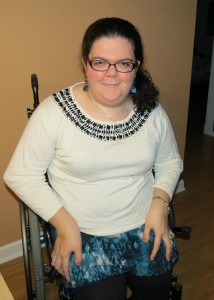Toy manufacturers like Lego and Mattel increasingly address diversity. Members of the Adelphi community address how creating an inclusive environment has long been part of our campus.
At the end of January 2016, major news sites and social media alike were abuzz with coverage of how Mattel and Lego were addressing diversity—in the case of Lego, with a mini figure in a wheelchair, and for Mattel, with the introduction of Barbie dolls in different body sizes.
While these items can be dismissed as mere playthings, they are important to the perceptions that are forming in developing young minds. Laura DeRose, Ph.D., clinical assistant professor in Adelphi’s Gordon F. Derner Institute of Advanced Psychological Studies, said, “The iconic image of Barbie contributed to an unconscious belief in girls that being thin, white and having straight blond hair is preferable to other body types, skin tones, hair colors and textures. It is a long overdue change that Mattel is now offering dolls that reflect a wider range of individual differences.”
Emily Ladau ’13, creator of the blog Words I Wheel By and a communications consultant specializing in disability issues, said, “I think it’s crucial for kids to understand that there’s diversity in the world around them, and the only way that’s going to happen is if it’s in front of them. It’s another means of normalizing disability.”
Ladau, who uses a wheelchair herself, said she that as a child she didn’t feel represented in the imaginary worlds she created with Legos and other toys. “When I was little, no one looked like me in the toys I played with except for a Barbie called Share a Smile Becky, who was in a pink and purple wheelchair,” she said. “If you’re representing a community of people, it has to be more than just one toy.”
Ladau has consulted for the United States Department of Labor to address accessibility issues in the workplace. She has also advocated for toy companies to be more representative in their product design. Primarily, she had blogged about and advocated for greater inclusion within American Girl dolls (her favorite as a young girl). The company recently introduced a doll with an insulin testing kit, helping to remind children with diabetes that they’re not alone in their condition.
According to Laura Ludlam, director of Adelphi’s Alice Brown Early Learning Center (ELC), high-quality early education programs have been on the forefront of addressing diversity. “We have had figures in our block area with crutches and canes for years,” she said. “Children fight over and want to play with them.” ELC educators regularly address diversity, answer children’s questions and create a culture of acceptance, “how we are alike but different,” Ludlam explained. “We all have rights, and it’s our responsibility to respect rights and create an inclusive environment.”
Adelphi has gone a long way in creating such an inclusive environment, according to Rosemary Garabedian, director of the University’s Disability Support Services office. Signage on campus has been changed to use the word “accessible” rather than “disabled,” and a new wheelchair logo shows the familiar stick figure on a blue background in motion rather than sitting stagnant, she said. Adelphi was also among the first colleges in the state to install T-Coil Hearing Loop Systems, which micro-broadcast sound to the hearing aids of people in the room, she added. Right now the devices are only in Post Hall but Garabedian’s office is working on expanding them to other buildings, including the Performing Arts Center theaters.
“I get letters from parents who say they’re sending their students here because they’ve heard of the services we have,” she said. “There are also high school counselors on Long Island who recommend us to their students based on the high level of services.”
For further information, please contact:
Todd Wilson
Strategic Communications Director
p – 516.237.8634
e – twilson@adelphi.edu
